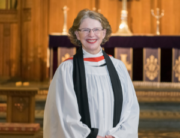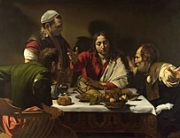A sermon given during the 6:00pm Easter Sunday Festal Choral Evensong, by The Rev’d Canon Jenny Wilson, on the 9th April 2023.
In the name of God, creating, redeeming, sanctifying, … Amen.
This week, in our Cathedral e-letter and on our FaceBook page, we read the following Quote for Holy week by the former Dean of Westminster Abbey, Michael Mayne:
We need to come to the events of Holy Week with the clear unclouded eyes of an artist or a child. For while the events of Holy Week speak to us of profound mysteries that have filled the world’s libraries with theological speculation, they also declare utterly simple truths that speak to the heart: the kind of truth that I may hear a thousand times, and yet a truth that does not become mine until I can feel it on my pulse and know it in my heart …[1]
I have a suspicion that we might come to the events of Easter in the same way … with the clear unclouded eyes of an artist or a child … pondering a truth …the kind of truth that we might hear a thousand times, and yet a truth that does not become ours until I we can feel it on our pulses and know it in our hearts …
The truth of Jesus’ resurrection…
The first thing is that we gaze at this truth in a dead place. Remembering what it felt like at the Tenebrae service, the service of Shadows, as the candles were extinguished and the light fell, and the bell tolled and the door slammed. And we went away into the night. Remembering the Last Supper and the washing of feet, resisted by Peter and many of us, perhaps, the intimacy of it frightening us away, and yet reaching out our hands for the bread and wine of that first supper remembered before we sat in the garden of repose for a little time, wondering what it must have been like for those disciples who he bid keep watch with him. They slept, of course, …we knowing that we too would probably have slept, the pain of Jesus’ plea to his Father, being too much to bear.
And Good Friday, the cross draped in red silk towering over us, as we sang and listened and heard the Passion read, and knelt before it bringing our griefs and our pain, our fear and our guilt, and the little we know of the awful pain of our world, with wars and famines and the struggle of our beloved planet to thrive.
How did we live Holy Saturday, what has been named a grey day, stillness perhaps, preparations, the hearing of Lynn Arnold’s reading of the Harrowing of Hell, portraying Jesus’ time in Hell. A time to allow the complexity of things to sit for a little while, until the dawn comes and the light, and we hear the stories, again, of Jesus risen.
It is the Year of Matthew, as we know, and so we heard this morning the words from Matthew’s 28th Chapter. It is the traditional account, of the empty tomb and the angel, telling them not to be afraid … why is it that angels always know we are afraid …showing them that Jesus is not there and telling them to go and tell the others and that Jesus will come … and then, there he is, and what does he say to the disciples, …“Greetings!”
How would the clear unclouded eyes of an artist or a child see this … would they be delighted with an angel … excited by Jesus’ absence … and then, where the rest of us would still be wiping away the tears from the death and shaking with fear at the angel’s presence, when Jesus said, “Greetings!” … wouldn’t a child have flung their arms around him and dragged him off to play … flooded with his clear delight at seeing them. “Greetings!” I ask you! Did he not remember our betrayals and our denials and our terrible tears as we watched him die? The joy bursting from him in new life that seemed not to countenance death at all.
And yet, as the scholars remind us, his hands had the barely healed marks of the nails, and if we were to see his side, the wound from the spear would be there. This resurrected Jesus is the one who was crucified. Would an artist or a child have stopped and touched the wounds and looked him in the eyes, looking for pain, before he smiled and ran with them, the life in him sweeping the death away. This is the crucified and risen Jesus, … no ghost, …flesh, blood, that Word made flesh that John’s Gospel speaks of in the Prologue to its mighty account of Jesus life, death and resurrection.
Perhaps, though, it is John’s portrayal and Jesus’ encounters with Mary and Thomas and Peter that we love most…
The windows in the Lady Chapel show beautifully an artist’s view of Jesus’ encounters with Mary and Peter. She didn’t know him as she stood weeping outside his empty tomb. “Woman, why are you weeping?” He said. How could this gardener not know, she must have wondered. She assumed he had taken Jesus body away, until he spoke … he spoke her name “Mary.” He seemed to love their names. In that time and place a name meant the whole person, created by God to thrive. She knew it was him immediately and returned by naming him, “Rabbouni, Teacher.” She must have leapt to throw her arms around him. But he wouldn’t have that. The Lady Chapel window shows very clearly Jesus opening his arms away from her as she kneels astounded at his feet. I’m not sure a child would have let him get away with that. But Mary understood. Knew somehow that she would not ever lose him again, in the way death lost him to her.
Michael Mayne reflects on their encounter in this way:
“Mary Magdalene who, in the most telling mistake in history, believed the risen Christ to be the gardener. Indeed, in a profound sense he is: and there is a sudden echo of the words in Genesis: ‘And they heard the voice of the Lord God walking in the garden in the cool of the day.’ No metaphor in the Bible carries more weight and offers richer truths than that of Christ as the second Adam, the one who alone of all our race looks at the transcendent mystery and names him as Father and opens our eyes to the reality of his love.”[2]
Michael Mayne goes on to quote G. K. Chesterton:
“On the third day, the friends of Christ coming at daybreak to the place found the grave empty and the stone rolled away. In various ways they realised … that the world had died in the night. What they were looking at was the first day of a new creation, with a new heaven and a new earth; and in a semblance of a gardener God walked again in the garden, in the cool not of the evening but the dawn.”[3]
For me it is one of the most poignant stories …The terrible pain of God in the garden of Eden, looking for company in the cool of the evening, only to find Adam and Eve hiding, guilty over the eating of the apple, their relationship with the creator irretrievably broken. There is healing now in this new garden on the first Easter dawn with Mary knowing at the sound of her name. What of us? Might we imagine Jesus whispering our name on our Easter night, glimpsing the possibility that for us, he lives, he is risen, he would open our eyes to the reality of God’s forgiveness and love.
Might we come to the events of Easter, the sound of Jesus’ voice saying to us, “Greetings!”, the presence of the Gardener who speaks our names, the truth that Jesus lives …now, Jesus lives, … Might we come to these events with the clear unclouded eyes of an artist or a child … pondering this truth …this kind of truth that we have heard, perhaps, a thousand times, this truth that might become ours might be felt on our pulses and known in our hearts …
[1] Michael Mayne Dust that Dreams of Glory p28.
[2] Michael Mayne Alleluia is our Song pp31-2
[3] Ibid., p32.





